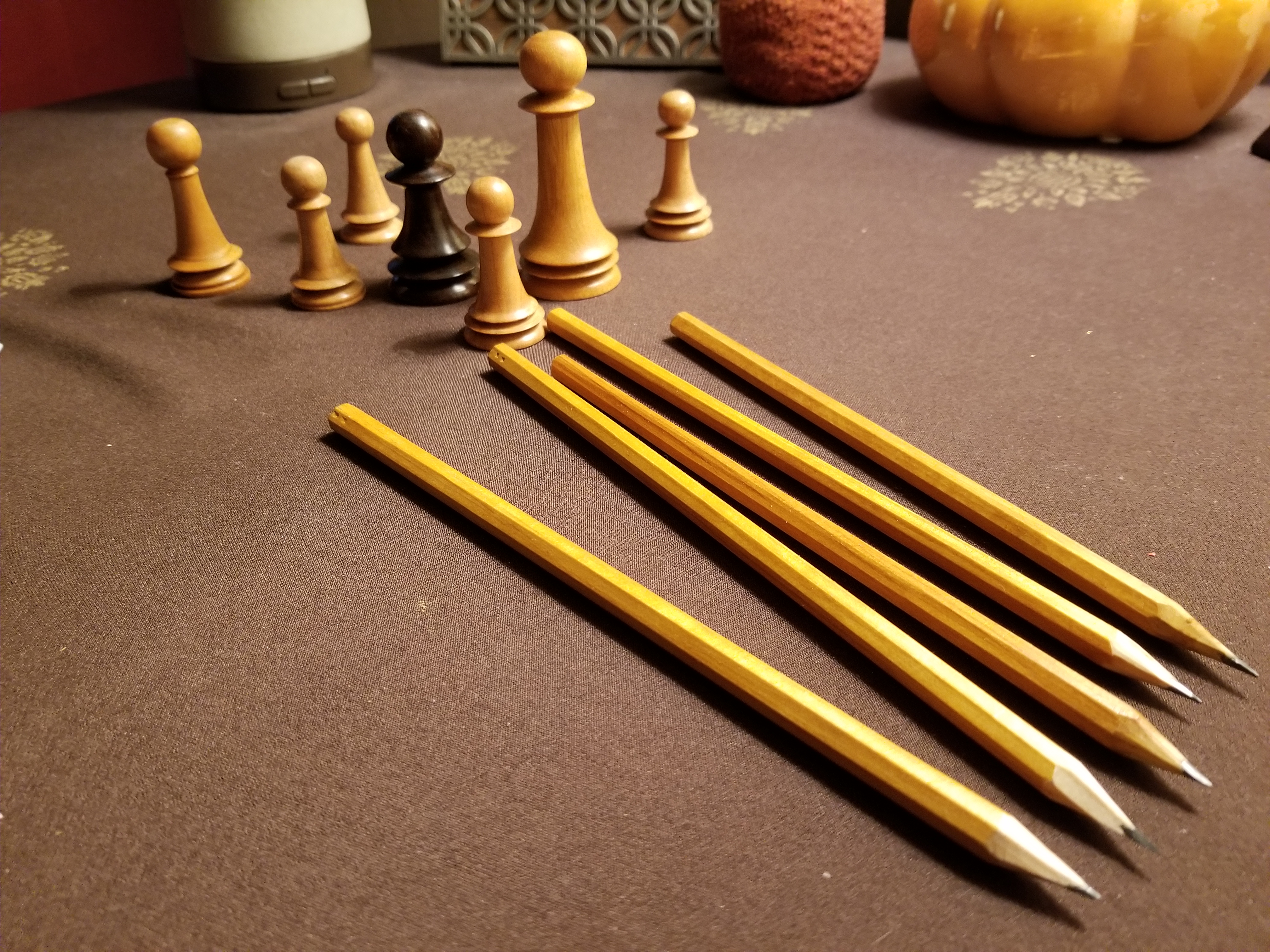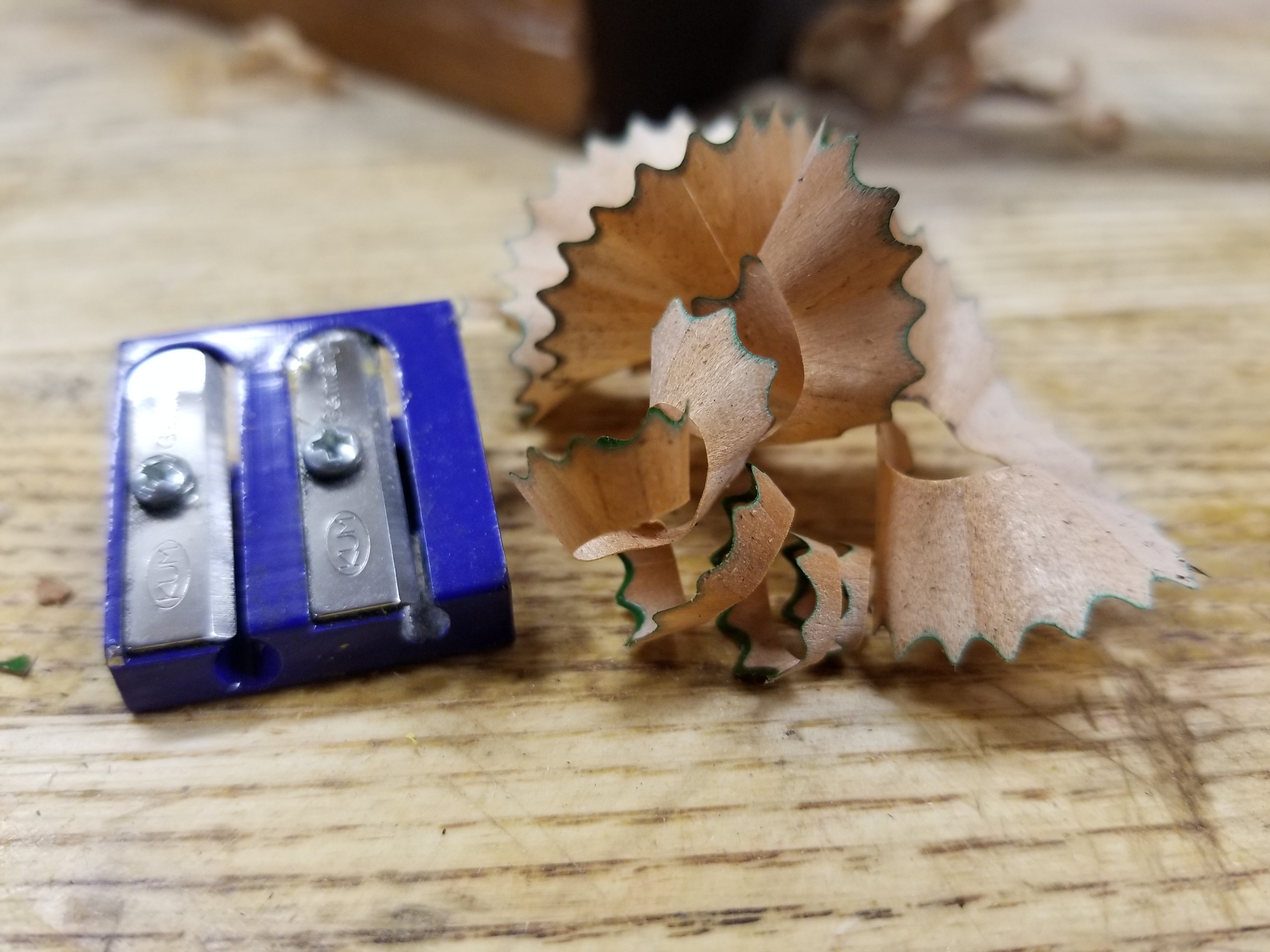
Pen turning has long been popular over here in the states, and perhaps it's popular over there. One of the reasons that I frequent this forum is because there seems to be more people actually making things by hand, and fewer talking about stuff like pen turning and other gadgetry.
(ignore the chess pieces in the background, I was experimenting at the same time with a decent looking pawn design that could be cut easily with just a skew)
At any rate, I took a fascination with pencils as I get older because it's easier for me at work as I move up in level to keep things straight by writing my thoughts in order. Graham noted in another thread that my thoughts can be difficult to follow, and unfortunately, that's true for me once I get deep into something. Writing helps to slow down and organize things. I bought a whole bunch of different pencils to make writing a pleasant feeling thing (which sounds over the top at first, until you experience just how wonderful the good pencils are), and have developed a fondness for tombow (9000, mono R, mono 2B), blackwing pearl, a mitsubishi unis, etc. It seems to me that we ought to be able to make decent pencils entirely by hand, so I devised a small scraping tool to scrape cedar accurately for the lead and proceeded to make pencils.
There is no economic potential in this, which makes it perfect for me.
To this point, I've been using higher quality drafting leads, but they fall short of the leads that are in the pencils mentioned above, so I've gotten the materials needed to make pencil leads (being that I don't have borrowdale mine in my back yard) and am on the fence so far about something that I think is probably mandatory to make them - a small kiln.
As with most other things, the cap iron figures into this, because the facets are cut onto the pencil with a standard bench plane (just upside down in the vise with a 60 degree block of wood clamped to the bottom). Cedar likes to tear out spectacularly, and you won't be lucky enough making these to avoid tearout without the cap iron unless you're willing to make literally hundreds and hundreds of strokes with a lightly set smoothing plane. Sanding is out of the question because it takes the detail right off of the pencil facets.
I'd be glad to take a picture of the tool (a glorified scratcher, but one that makes it easy to cut the groove centered and evenly) that I made to make grooving the wood fairly easy.
Finish is just french polished shellac, but poor man's french polish. You can finish half a dozen or 10 in an hour, the key is just using oil while rubbing on the shellac so that you can continue to rub more on the pencil (once it would otherwise be sticky and stop your progress) and continue to level it at the same time.
The wood is incense cedar, but any soft cedar wood is fine, and a soft pine probably would be, too.

































